
Alain Resnais was a French film director and screenwriter whose career extended over more than six decades. After training as a film editor in the mid-1940s, he went on to direct short films including Night and Fog (1956), an influential documentary about the Nazi concentration camps.
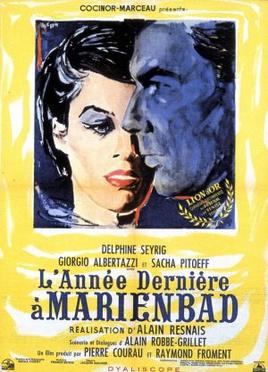
Last Year at Marienbad, released in the United Kingdom as Last Year in Marienbad, is a 1961 French New Wave avant-garde psychological drama film directed by Alain Resnais and written by Alain Robbe-Grillet.

Jean Dasté was a French actor and theatre director.

Mon oncle d'Amérique is a 1980 French film directed by Alain Resnais with a screenplay by Jean Gruault. The film juxtaposes a comedy-drama narrative with the ideas of Henri Laborit, the French surgeon, neurobiologist, philosopher and author. Its principal actors are Gérard Depardieu, Nicole Garcia, and Roger Pierre.

Roger Pierre was a French comedian and actor.
The Prix Jean Vigo is an award in the French cinema given annually since 1951 to a French film director, in homage to Jean Vigo. Since 1960, the award has been given to both a director of a feature film and to a director of a short film. The award is usually given to a young director, for their independent spirit and stylistic originality.
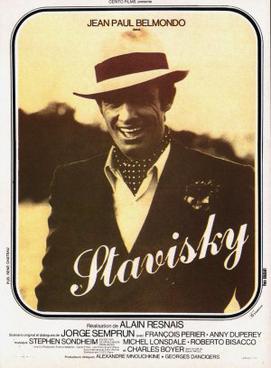
Stavisky... is a 1974 French biographical drama film based on the life of the financier and embezzler Alexandre Stavisky and the circumstances leading to his mysterious death in 1934. This gave rise to a political scandal known as the Stavisky Affair, which led to fatal riots in Paris, the resignation of two prime ministers and a change of government. The film was directed by Alain Resnais and featured Jean-Paul Belmondo as Stavisky and Anny Duperey as his wife, Arlette. Stephen Sondheim wrote the film's musical score.
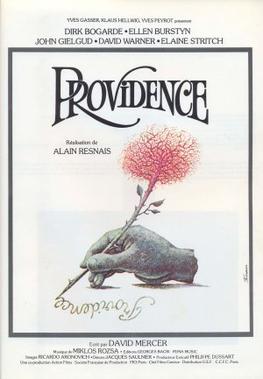
Providence is a 1977 French/Swiss film directed by Alain Resnais from a screenplay by David Mercer. It explores the processes of creativity through a portrayal of an ageing novelist, played by John Gielgud, who imagines scenes for his latest novel which draw upon his past and his relationships with members of his family. The film won the 1978 César Award for Best Film.
Sacha Vierny was a French cinematographer. He was born in Bois-le-Roi, Seine-et-Marne, Île-de-France, France, and died in Paris, France, at the age of 81. He is most famous for his work with Alain Resnais – especially for the two films Hiroshima mon amour and L'année dernière à Marienbad – and with Peter Greenaway.
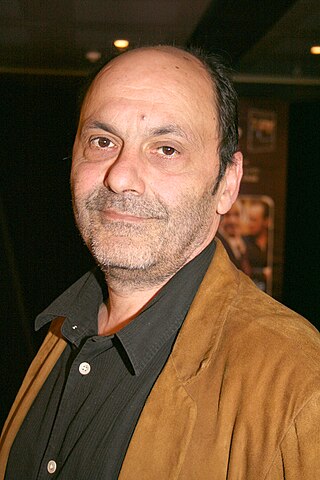
Jean-Pierre Bacri was a French actor and screenwriter.

Muriel is a 1963 French psychological drama film directed by Alain Resnais, and starring Delphine Seyrig, Jean-Pierre Kérien, Jean-Baptiste Thiérrée, and Nita Klein. Its plot follows a middle-aged widow in Boulogne-sur-Mer and her stepson—recently returned from military service in the Algerian War—who are visited by her ex-lover and his new young girlfriend.

Marie Dubois was a Parisian-born French actress.
The French Syndicate of Cinema Critics has, each year since 1946, awarded a prize, the Prix Méliès, to the best French film of the preceding year. More awards have been added over time: the Prix Léon Moussinac for the best foreign film, added in 1967; the Prix Novaïs-Texeira for the best short film, added in 1999; prizes for the best first French and best first foreign films, added in 2001 and 2014, respectively; etc.
Jean Gruault was a French screenwriter and actor. He wrote 25 films between 1960 and 1995. He was nominated for an Academy Award for Academy Award for Best Original Screenplay for the 1980 film Mon oncle d'Amérique.
Véronique Silver was a French actress.

Wild Grass is a 2009 French comedy-drama film directed by Alain Resnais. The film competed in the main competition at the 62nd Cannes Film Festival.

Jacques Spiesser is a French actor.
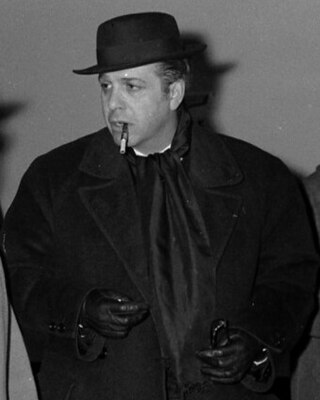
Robert Manuel was a 20th-century French stage, television, and film actor, and film director.

The 37th annual Venice International Film Festival was held on 28 August to 8 September, 1980.
Samson Fainsilber was a Romanian-born French film actor. During his career he appeared in around sixty films and television series. He featured in the 1933 historical drama Roger la Honte.














